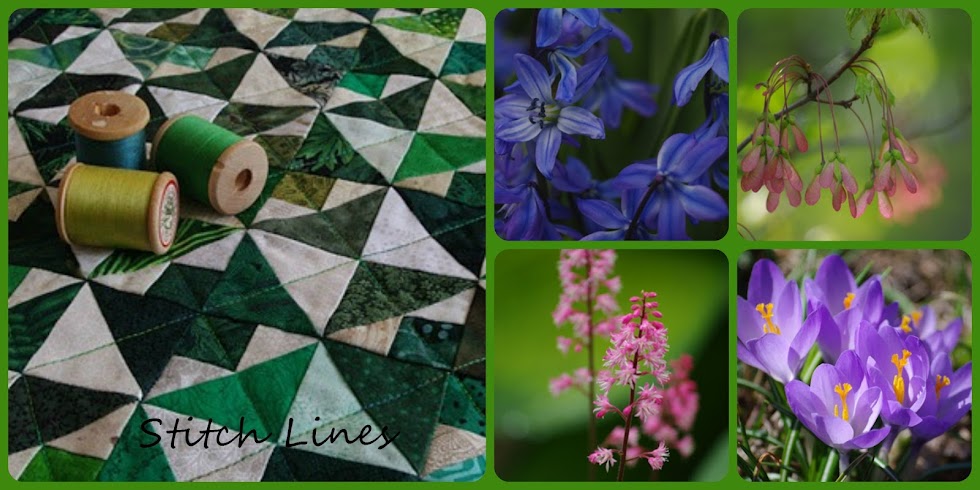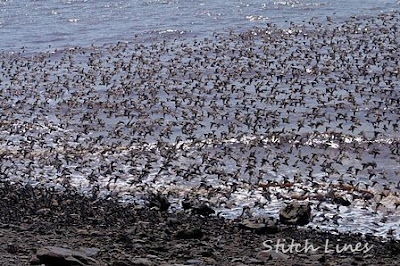 |
| from GraphicMaps.com |
I live in New Brunswick, on the east coast of Canada. We are bordered by the American state of Maine, the province of Quebec, the Atlantic Ocean, and are connected in the southeast corner to Nova Scotia by the narrow Isthmus of Chignecto, and to Prince Edward Island by the 8 mile long Confederation Bridge. Our southern coast is bounded by the Bay of Fundy, famous for the highest tides in the world.

The Bay of Fundy is a 270 km. (170 mile) long ocean bay that stretches between New Brunswick and Nova Scotia. Each day 160 billion tonnes of seawater flows in and out of this bay during one tide cycle. (That's more than the combined flow of all the world's freshwater rivers!) The bay area has many aspects worth exploring: its beaches, sea caves, cliffs and salt marshes, the Tidal Bore, the Fundy Trail, beautiful Fundy National Park, Joggins Fossil Cliffs, whale watching cruises, sea kayaking, and bird watching to name a few.
 |
| Red cliffs along the Shepody Bay area of the upper Bay of Fundy |
With each tide, waves and currents wreak changes on the mud and gravel flats in the upper bay. Seaweeds common to rocky shores can find no grip on muddy beaches so they appear lifeless, but this couldn't be further from the truth. The muddy flats are actually teeming with life - clams, tube worms, clam worms, whelks, and tiny snails and shrimp are just some of the creatures here.
Massive flocks of shorebirds, travelling from their nesting grounds in the Canadian Arctic to South America, stop at the Bay of Fundy to feed and fuel up before continuing their migration flight south.
 |
Sandpipers are small, as you can see here, in comparison to the seagull.
There are well over 100 sandpipers in this photo. |
Yesterday I visited Johnson's Mills, just outside Dorchester N.B. to view this spectacle. Thousands of semipalmated sandpipers are currently feeding on the mud flats in the bay area, in fact about 75% of the world's population of semipalmated sandpipers stops here each year. At peak season there can be flocks of up to 200,000!
At low tide they are out on the mud flats feeding on the tiny mud shrimp,
corophium volutator, which is found only in the Bay of Fundy and the Gulf of Maine.
As the tide rises, the birds move closer to shore and at high tide, they roost/rest in large groups on the pebble beach, close enough for excellent viewing. Yesterday it was estimated we were looking at 80,000 birds. Of course they are too numerous to actually count accurately; the Interpretors "count" by looking at the shore area covered and estimating 100 birds per square metre. Yes, they are really "packed in."
The semi-palmated sandpiper is not a very big bird, it weighs around 20 grams - the same as a strawberry! But within its two to three week stay here on the bay, it will eat enough to double its weight by consuming 10,000 to 20,000 mud shrimp at each low tide!! These fat stores will provide the necessary energy for the 4300 km. non-stop flight to South America which takes about 72 hours.
Among the semipalmated sandpipers (black legs) one can often see several other species as well- the least sandpiper (distinguished by its yellow-green legs), the black-bellied plover and the semipalmated plover. You can see several plovers in the photo above - they have a black band on their upper breast and are closest to the camera, just above my Stitch Lines watermark.
When resting on the pebble beach, from a distance (and even fairly close up) one would hardly know the birds are there. They blend in so well, they are virtually indistinguishable from the beach rocks. But as one looks carefully, one sees the beach is alive with masses of the tiny birds.
Only when they lift off in flight can you appreciate the vast numbers.
Although we were hoping they would lift off numerous times so we could enjoy the dramatic aerial display as they twist and turn, showing ribbons of alternately light fronts and dark backs, it is best for them to remain at rest to conserve the energy they are storing up for their long migratory flight. Predatory peregrine falcons were nearby and a pair flew by occasionally, causing the sandpipers to lift off and shift their position up the beach.
I was wishing I had the massive lenses that others were using, or video capability, but had to be satisfied with my one telephoto. I hope you will enjoy these still images, but be sure you click the following links to watch several videos of the birds in flight - their aerial dance is so incredibly beautiful; click
here and
here. They will give you a good idea of what we actually witnessed, as my still photos just don't do it justice. Both were filmed at Dorchester/Johnson's Mills, and the second one is set to music. Almost as good as being there! Nature is so incredibly amazing!
Along with the other birdwatchers present, there was a film crew recording the sandpipers and their incredible aerial dance, for an upcoming CBC series to air in October 2017 on
The Nature of Things. The series will be called
The Wild Canadian Year - An Epic Journey Through the Seasons. I had a great chat with one of the photographers and cannot wait to see this series. You can follow them through production here at
www.cbc.ca/wildcanadianyear.
I took well over 150 photos and am still editing. I'll probably add a few more tomorrow, so I hope you'll come back for another visit.
I am linking with Judith at
Mosaic Monday and with Mersad at
Through my Lens.
Peace,
Linda
“I think the most important quality in a birdwatcher is a willingness to
stand quietly and see what comes. Our everyday lives obscure a truth
about existence - that at the heart of everything there lies a stillness
and a light.”
~ Lynn Thomson,
Birding with Yeats: A Memoir




























































